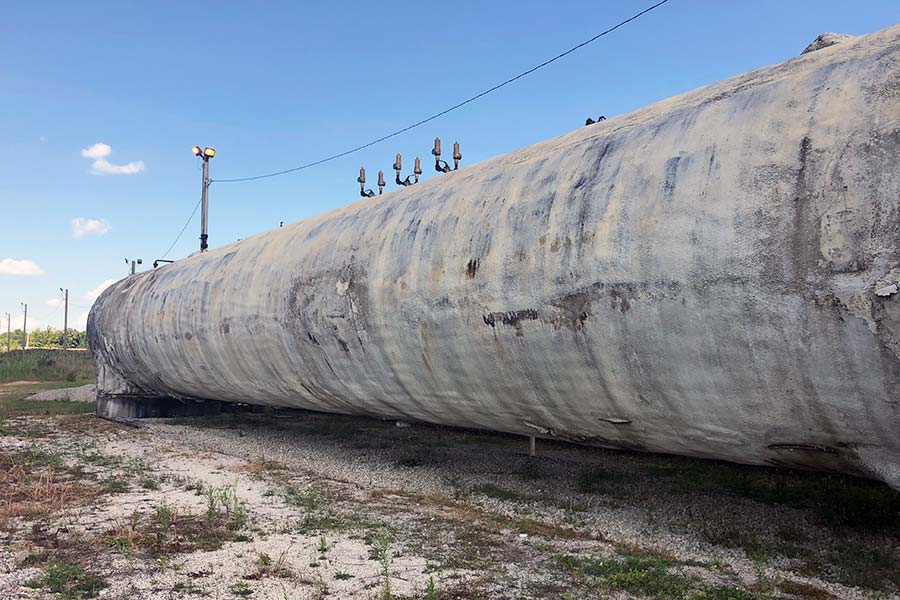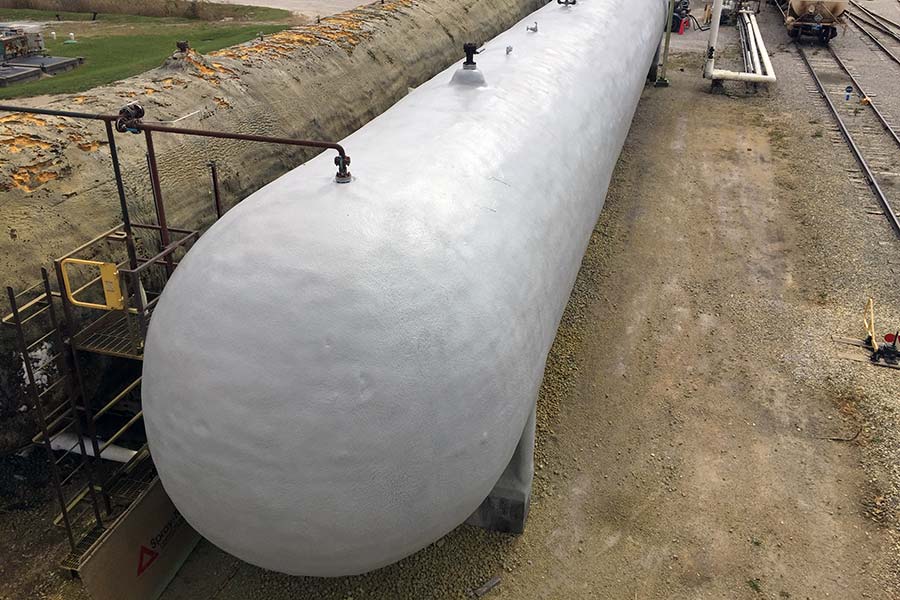
This unique problem called for a unique solution. In this project, butyl coatings were used in conjunction with closed-cell spray polyurethane foam to effectively restore and protect two massive storage tanks.
Research
The customer in this project is a leading manufacturer of various household products like baking soda and cat litter. They use carbon dioxide storage tanks for manufacturing. The two specific tanks, in this case, are 116 linear feet each. Both were insulated several years ago.
Due to deterioration caused by condensation, frozen sections of foam, UV-damaged coating/foam, etc, the customer was experiencing increased costs and loss of production. Despite various repairs made to the tanks over the years, they needed to be completely re-insulated.
Process
The installing contractor created a scope of work to ensure proper long-term performance. First, the deteriorated polyurethane foam was removed. Next, the exterior surface was primed with a 2-part primer. Then, 6” (R-40) 3 lbs. closed-cell polyurethane foam was applied to each tank.
Finally, each tank received two coats of Butyl 310 to protect the underlying foam. This UV stable layer provides a durable, seamless, and flexible waterproof membrane that resists cracking as a result of expansion and contraction (thermal cycling).
Result
The finished product produced a visibly cleaner tank with a seamless top coat. Butyl 310 has excellent reflectivity that resists 80-90% of the heat caused by UV rays. In the future, this will help the tanks avoid the UV damage they previously experienced.
The spray polyurethane foam being closed-cell means it has a higher R-value. The higher the R-value, the more resistant the foam is to heat flow and the better it insulates. Additionally, the butyl top coat will protect the spray polyurethane foam underneath to prevent it from freezing, as the customer had also previously dealt with. Butyl coatings are vapor-retardant which makes them ideal for use over SPF. One tank was completed first, so the following photos compare it to the uncoated tank.
Have a coating project in mind? We provide fluid-applied systems for a variety of applications. To learn more, find an American WeatherStar Field Representative in your area today.
Related Posts
Getting Started in the Roof Restoration Industry
If you are not in the restoration business as a commercial roofing contractor, you are missing out on a huge opportunity. Many roofing…
Negatives of Acrylic Coatings on Flat Roofs
Acrylic roof coatings provide many benefits. Not only are they more cost-effective than other coating chemistries, but they’re also highly…
Heat Blisters in Dark-Tinted Elastomeric Coatings
Heat blisters have always been a concern when applying a dark-colored, high-build elastomeric roof coating during the hot summer months. Because…













